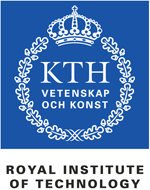1 Postdoctoral position in Nanostructure Physics in Sweden | KTH - Royal Institute Of Technology
316 0 1 0
Σύγκριση
Προσθήκη στα αγαπημένα
Στοιχεία επικοινωνίας
Brinellvägen 8, SE-100 44. Stockholm
KTH - Royal Institute Of Technology
Tel. +46 8 790 60 00, Fax. +46 8 790 65 00
Vladislav Korenivski, Professor
Tel: +46 8 16 10 98
Tel. +46 8 790 60 00, Fax. +46 8 790 65 00
Vladislav Korenivski, Professor
Tel: +46 8 16 10 98
Επιστημονικοί τομείς
- Φυσική
Φορέας υποτροφίας
Καταληκτική ημερομηνία αιτήσεων
Λήγει: 03/04/2015
Περιγραφή
KTH Royal Institute of Technology in Stockholm is the largest and oldest technical university in Sweden. No less than one-third of Sweden’s technical research and engineering education capacity at university level is provided by KTH. Education and research spans from natural sciences to all branches of engineering and includes Architecture, Industrial Management and Urban Planning. There are a total of 13,400 first and second level students and almost 1,900 doctoral students. KTH has 4,900 employees.
KTH Engineering Sciences carries out a wide range of research at the international front line, from fundamental disciplines such as physics and mathematics, to engineering mechanics with applications such as aeronautics and vehicle engineering. We also offer University degree programs in Engineering Physics, Vehicle Engineering, and ‘Open Entrance’, as well as a number of International Masters Programmes.
The research group in Nanostructure Physics within the department of Applied Physics is offering a two-year postdoc position in the field of nano-magnetism and spin-electronics.
The research group is currently active in spin-thermo-electronics, spin-dynamics in synthetic nanomagnets, and spin-photo-electronics.
Qualifications:
A PhD degree, awarded (or planned to be awarded before the commencement of the position) from a foreign university in Physics is a requirement. The successful applicant should be strongly motivated, have the capability to work independently, successfully collaborate with other members of the research group as well as maintain efficient collaborations within our established international research networks.


